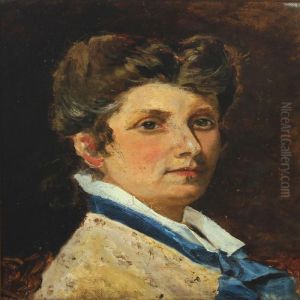Hans Dammann Paintings
Hans Dammann was a German sculptor born on March 22, 1867, in Stettin, which at the time was part of the Kingdom of Prussia (now Szczecin, Poland). He was an important figure in the field of sculpture during the late 19th and early 20th centuries. Dammann was known for his realistic and expressive works, which often reflected the human condition and the social realities of his time.
Dammann trained at the Berlin Academy of Arts under the mentorship of renowned sculptors such as Gerhard Janensch and Albert Manthe. He was heavily influenced by the prevailing artistic movements of his time, including Realism and later on, aspects of Expressionism. His work encompassed a variety of subjects, including monuments, public statues, and funerary art, as well as smaller sculptures and busts.
His career was marked by notable achievements, including several awards and exhibitions. Dammann's sculptures were exhibited at the Great Berlin Art Exhibition and other significant venues, earning him a reputation for his skillful craftsmanship and attention to detail. Some of his prominent works include war memorials and public monuments, which can still be seen in Germany today.
The rise of National Socialism in Germany and the onset of World War II had a significant impact on Dammann's later career. Although there is limited information on his involvement with the Nazi regime, like many artists of the period, he had to navigate the complex political landscape in order to continue his work.
Hans Dammann died on May 8, 1942, in Berlin, Germany. Despite the challenges of his time, Dammann's legacy lives on through his sculptures, which remain a testament to his artistic vision and technical prowess. His contributions to German sculpture have ensured that he is remembered as a significant artist of the early 20th century.
